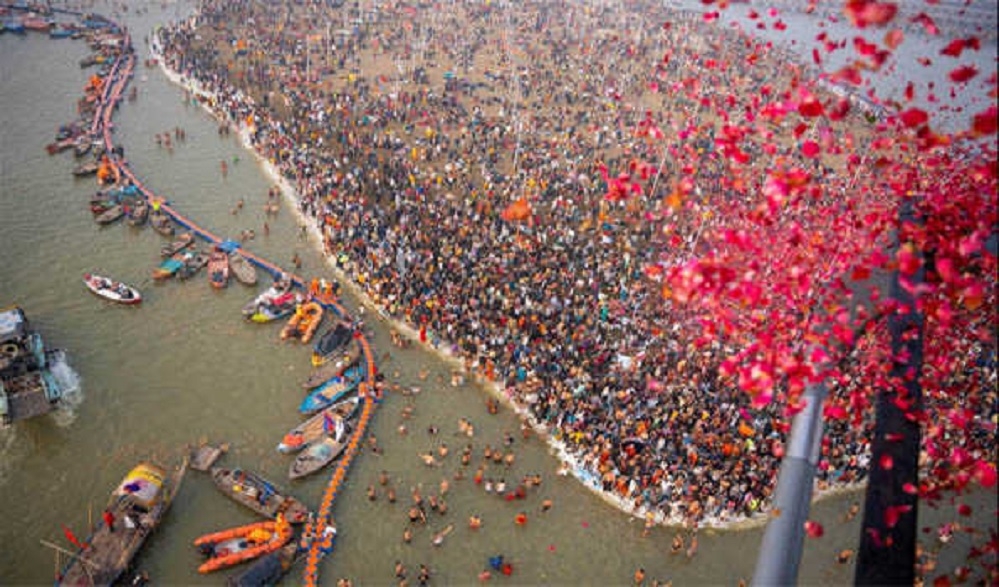Dip Into Holy Sangama
| Date :02-Mar-2025 |

By DR BHUSHAN KUMAR UPADHYAYA :
The Kumbha is the most
vibrant, monumental and
largest celebration of the
Hindus. It is woven into an intricate tapestry of faith, symbols, traditions, culture, astrology, spirituality and social harmony. It is held
at the four places namely
Prayagaraja, Nasik, Ujjain and
Haridwar at a gap of twelve years
each. It has become an integral
part of Indian oral traditions that
the nectar splashed at the four
places from its pitcher after the
Samudra Manthan or the churning
of the ocean in the attempt by
gods to save it from the demons.
These four places became the
most sacred and Kumbha celebrations are held there.
The story of the Samudra
Manthan has ancient roots in the
Mahabharata and Puranas, but the
story of the spillover of the nectar
is not found there. It seems a later
oral addition. Astrologically the
presence of the Jupiter planet in
the Aquarius zodiac sign which is
called Kumbha in Sanskrit heralds
the beginning of this celebration
and this planetary position happens only during the Haridwar
gathering.
The Nasik and Ujjain
celebrations are called Simhastha
or the planetary position when
Jupiter enters the Leo or the
Simha Rashi or zodiac sign. At the
time of the Prayagaraja celebration, Jupiter remains in the Taurus
zodiac sign or the Vrishabha
Rashi. So the Hardwar celebration
is the oldest gathering as far as
the word Kumbha is connoted. It is
the faith of the Hindus that the dip
into the holy Sangama or the confluence of the rivers Ganga,
Yamuna and Saraswati cleanses
all the sins and one gets free from
the cycle of birth and death.
The river Saraswati is called
Antah Salila or whose water is
present beneath and not visible.
This faith has a great symbolic
value interwoven into the Yogic
and tantric traditions. In the books
of Yoga and Tantra, it is mentioned
that there are three prominent
energy channels which flow in our
body like rivers. They are called
Ida, Pingala and Sushumna. In
normal course the prana or life
force flows into Ida and Pingala.
But spiritual practices specifically
Kundalini Yoga facilitates the flow
of the Prana into the Sushumna
channel. All these three Nadis or
channels meet at the Ajna chakra
or the master eye plexus between
the eyebrows. The confluence of
all these three Nadis elevates and
purifies consciousness and one
becomes free from all the dualities
of material life. In the Shiva
Samhita these three Nadis are
called Ganga, Yamuna and
Saraswati. Hence when our consciousness takes a dip into the
confluence of these three energy
channels, it is free from all impurities and is established into its
pristine form.
This is the spiritual
significance of the holy Sangama
dip. These gatherings have been
so important that from time to time
they have attracted royal patronage also. These celebrations have
been the great epitome of social
harmony, service, charity,
penance, devotion and divine
grace. Great saints, seers and
especially Naga saints are the
great attractions of these gatherings.UNESCO has designated
these Kumbh Melas as the
Intangible Cultural Heritage of
Humanity.

(The writer is Former DG
Police & CG, Homeguards,
Maharashtra)
